Tempo
A Scarecrow Press Music Series on
Rock, Pop, and Culture
Series Editor: Scott Calhoun
Tempo: A Scarecrow Press Music Series of Rock, Pop, and Culture offers titles that explore rock and popular music through the lens of social and cultural history, revealing the dynamic relationship between musicians, music, and their milieu. Like other major art forms, rock and pop music comment on their cultural, political, and even economic situation, reflecting the technological advances, psychological concerns, religious feelings, and artistic trends of their times. Contributions to the Tempo series are the ideal introduction to major pop and rock artists and genres.
Bon Jovi: Americas Ultimate Band, by Margaret Olson, 2013.
Ska: The Rhythm of Liberation, by Heather Augustyn, 2013.
Bruce Springsteen: American Poet and Prophet, by Donald L. Deardorff II, 2014.
Bruce Springsteen
American Poet and Prophet
Donald L. Deardorff II

THE SCARECROW PRESS, INC.
Lanham Toronto Plymouth, UK
2014
Published by Scarecrow Press, Inc.
A wholly owned subsidiary of Rowman & Littlefield
4501 Forbes Boulevard, Suite 200, Lanham, Maryland 20706
http://www.scarecrowpress.com
Estover Road, Plymouth PL6 7PY, United Kingdom
Copyright 2014 by Donald L. Deardorff II
All rights reserved. No part of this book may be reproduced in any form or by any electronic or mechanical means, including information storage and retrieval systems, without written permission from the publisher, except by a reviewer who may quote passages in a review.
British Library Cataloguing in Publication Information Available
Library of Congress Cataloging-in-Publication Data
Deardorff, Donald L.
Bruce Springsteen : American poet and prophet / Donald Deardorff. pages ; cm. (Tempo : a Scarecrow Press music series on rock, pop, and culture)
Includes bibliographical references and index.
ISBN 978-0-8108-8426-7 (cloth : alk. paper) ISBN 978-0-8108-8427-4 (ebook)
1. Springsteen, BruceCriticism and interpretation. 2. Springsteen, BruceInfluence. I. Title.
ML420.S77D43 2014
782.42166092dc23 2013030573
 The paper used in this publication meets the minimum requirements of American National Standard for Information Sciences Permanence of Paper for Printed Library Materials, ANSI/NISO Z39.48-1992.
The paper used in this publication meets the minimum requirements of American National Standard for Information Sciences Permanence of Paper for Printed Library Materials, ANSI/NISO Z39.48-1992.
Printed in the United States of America
Foreword
In the music of Bruce Springsteen, I hear what I like to think the United States of Americas founding documents would sound like if plugged in some two hundred years later. Like power chord arguments. Like electrified anthems. Like the passionate promises that friends and lovers make to stick with each other while making a more perfect union. Imagine the Declaration of Independence, with all its protest and defiance, and the U.S. Constitution, with all its grandeur and aspirations, as twentieth-century pop songs. The documents provide the words and feelings. Rock n roll provides a library of sounds from all the American moods present in our folk songs, our rhythm and blues, our gospel, and in the pomp of our festival and marching bands. All it would take is someone willing to study it all, learn the truths, respect the forms, and then be desperate enough to work to make it original for himself, so that it might become real and give his own life a much-needed meaning and purpose. That student was Bruce Springsteen, and that is what his music sounds like to me.
Springsteennow a master at writing the American rock song and performing the ideas of America in his rock n roll showsreminds us that now, as then in the late eighteen hundreds, after a century of progress by the first European pilgrims, Americas potential is too great and too preciousnot to mention, its people too sacredto be managed by distant authorities and impersonal institutions. Just as the poetry in those early documents inspires as it argues for liberty, equality, and unity and as the rhythm of history was empowering the colonists to take matters into their own hands, Springsteens songs are an expression of those same dreams and that same energy for many Americans in the late twentieth century and into the early twenty-first century. For him to write and sing the songs gives him hope, and for us to hear the songs encourages us to press through the setbacks and despair that come from living in a land not yet fully realized.
As this book presents, many a Springsteen song takes us to the musical equivalent of a promised land, especially when backed by the E Street Bands joyfully thunderous noise, but we meet in them a reoccurring character who feels far from Eden. He is trapped, weak, lost, or overwhelmed by the moral ambiguity of the context of his postadolescent life. Most Springsteen lyrics are from a mans point of view, and many of the dilemmas that the songs men face are brought about by coming-of-age in American culture after the societal revolutions of the 1960s. What, now, is the mans role at home? at work? in society? What is the measure of success for the American male now? What are the examples and role models for a man of the baby boom generation? What even makes a man a man? Springsteens songs tell first-person accounts of walls closing in, horizons shrinking, and dreams evaporating. The young adults, brothers, veterans, husbands (and, occasionally, mothers) are not so strong anymore or so sure of what the right thing to do is, and they are not so holy as to not break a law while looking for an answer or even contemplate death as their only escape. These characters are just the ones whom Springsteens songs are written for, and their real-life counterpartshis fansoften speak of finding solace in the songs and encountering a community of hope and healing at his concert.
Springsteen often takes the point of view of the poor in spirit, directing his anger at the injustice of a government serving the interests of only the wealthy, the powerful, or the white and at the damage done by an economy of greed that eventually robs whole sections of America of their chance to have the American dream through the dignity of work. Because he does so, Springsteen is often compared with John Steinbeck, Pete Seeger, and Bob Dylanand rightly so. His should be the fourth face on a Mount Rushmore of twentieth-century American protest writers. But as Springsteens medium is rock n roll and as his stagecraft is influenced more by the likes of James Brown and Roy Orbison, both of whom he cites as idols, than by the Greenwich Village singersongwriters, there is noticeably more energy and hunger in him to play to the biggest crowds and feel their adoration, even as he seeks to sway the opinions of protesters and voters. Whether working on a solo project, playing a benefit concert, supporting a presidential campaign, or just being The Boss of the E Street Band, the total effect of Bruce Springsteens songbook is a louder, nosier music that does more than the work of social critiqueit breaks apart the despair of the moment and brings healing on the spot. As the American spirit has always been willing, quite often many of our bodies are too weak. Springsteen is a believer, in the end, of the power of hope and in music as the vessel for delivering it.
Scott Calhoun
Tempo Series Editor
Timeline
World Events | Bruce Springsteen Career |
January 1949: RCA introduces the 45-rpm record. |

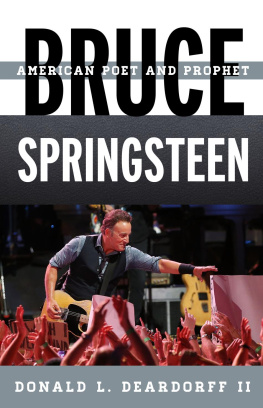

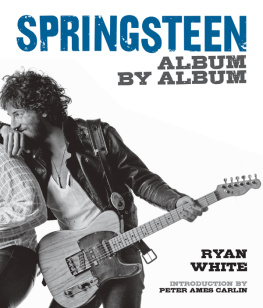

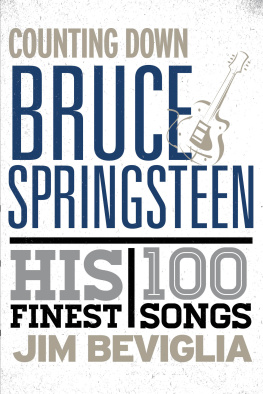
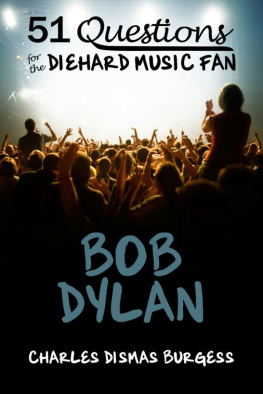

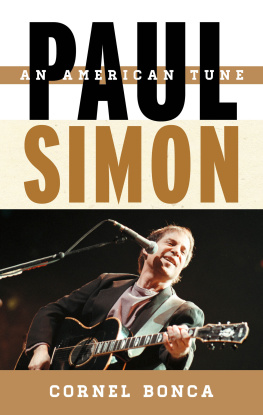
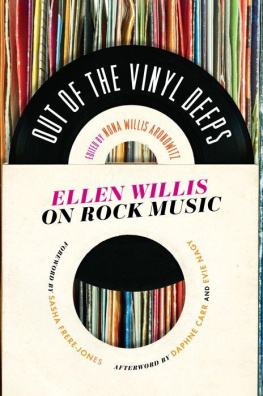


 The paper used in this publication meets the minimum requirements of American National Standard for Information Sciences Permanence of Paper for Printed Library Materials, ANSI/NISO Z39.48-1992.
The paper used in this publication meets the minimum requirements of American National Standard for Information Sciences Permanence of Paper for Printed Library Materials, ANSI/NISO Z39.48-1992.